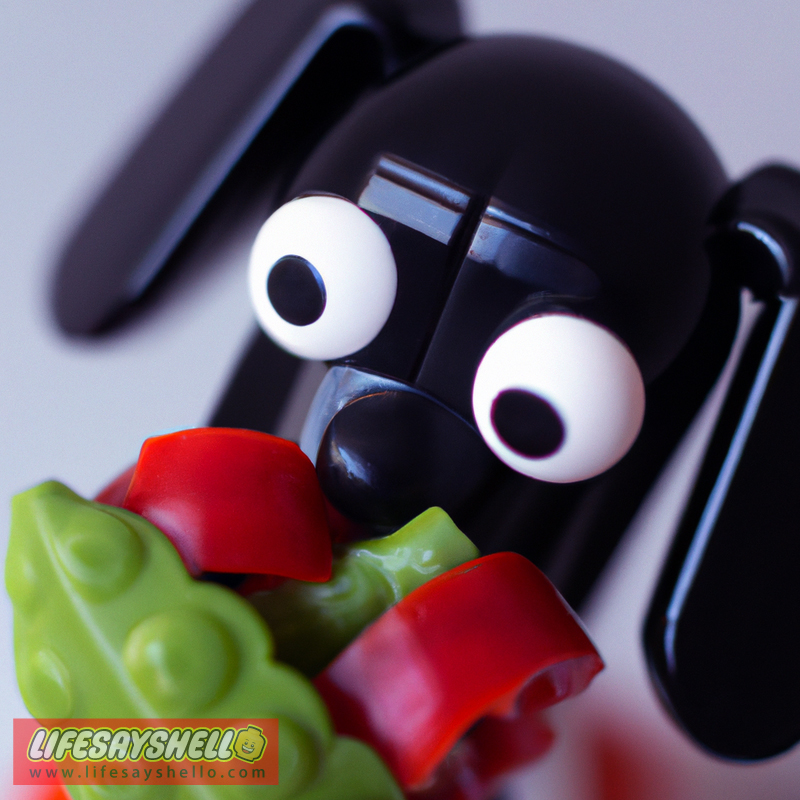The Ultimate Guide to Vegetables for Dogs: What's Safe and What to Avoid

Are vegetables good for dogs? Can dogs eat veggies like broccoli, carrots, and spinach? What about onions, tomatoes, or mushrooms - are they safe for pups? When it comes to feeding our furry friends, it's important to understand which vegetables are healthy additions to their diet and which ones should be avoided.
In this ultimate guide, we'll cover the benefits of vegetables for dogs, go over the best dog-safe veggies packed with nutrition, and outline which vegetables are toxic and dangerous for dogs to eat. Read on to learn the dos and don'ts of feeding vegetables to dogs!
Why Vegetables Are Beneficial for Dogs
First, let's look at why vegetables can be a healthy part of your dog's diet. Vegetables provide important vitamins, minerals, and nutrients that aren't found in meat or grains. Adding veggies to your dog's meals or as nutritious snacks can provide the following benefits:
Fiber - Vegetables are excellent sources of fiber, which aids digestion and promotes regular bowel movements. Fiber also helps dogs feel full between meals.
Vitamins & Minerals - Many vegetables contain vitamins A, C, K, iron, calcium, potassium, and more - all of which are vital to your dog's health.
Antioxidants - Colorful veggies are packed with antioxidants which boost immunity and prevent disease.
Low calorie - Veggies are lower in calories than many dog treats and foods, making them a great choice for managing weight.
Dental health - Some crunchy veggies like carrots gently clean dog's teeth and reduce plaque buildup as they chew.
Of course, veggies should never make up the bulk of your dog's diet - they still require balanced commercial dog food for complete nutrition. Vegetables should account for less than 25% of their total daily food intake. But used in moderation, vegetables make excellent low-calorie treats and nutritious mix-ins for meals.
Now let's explore some of the best dog-safe vegetables to feed your four-legged friend!
Best Vegetables for Dogs
1. Broccoli
Broccoli provides vitamin C, vitamin K, fiber, and phytochemicals. It makes a nutritious and low-calorie snack. Broccoli can be served raw or cooked - many dogs enjoy it lightly steamed. However, introduce it slowly as it may cause mild gas in some pups.
2. Carrots
Crunchy and sweet, carrots make a great treat! They are packed with fiber, vitamin A through beta-carotene, potassium, and vitamin K1. Raw baby carrots are perfect for chewing and dental health. For older dogs, cook carrots until soft as they may have difficulty chewing raw veggies.
3. Green Beans
Known for their high fiber content, green beans are also filled with vitamins A, C, K, calcium, folic acid, iron and potassium. They make an excellent substitute for fatty treats. Green beans can cause some flatulence though, so introduce them gradually. Choose low-sodium canned green beans or cook fresh green beans plain.
4. Peas
A good plant-based protein source, peas contain protein, vitamin K, fiber, potassium, iron, magnesium, and phytonutrients. They can be served cooked or raw. Peas are often used as a protein source in commercial dog foods as well. Stick to plain frozen or fresh peas, not canned varieties with added sodium.
5. Spinach
Spinach contains vitamin A, vitamin C, vitamin K, iron, potassium, calcium, fiber, folic acid, magnesium and more! It's a true superfood veggie for dogs. Feed spinach raw or lightly cooked and always monitor your dog while eating it - the fibrous nature of spinach can cause choking in some dogs.
6. Lettuce
Crisp iceberg, romaine, arugula, and other leafy lettuces have very low calorie density - they are 90% water! This makes lettuce useful for adding bulk and fiber without many additional calories. Be sure to only feed the leafy parts of the lettuce and avoid the core/stem. Romaine and other darker greens provide more nutrition than iceberg.
Vegetables for Dogs: Serving Tips
When incorporating dog-safe veggies into your pup's diet, keep these tips in mind:
- Introduce new vegetables slowly and one at a time to check for allergies or intolerance
- Chop vegetables into bite-size pieces to prevent choking
- Cook hard vegetables until soft for older dogs with dental issues
- Remove any seasonings, salt, butter, or oils before feeding veggies to your dog
- Consult your vet for suggested serving sizes based on your dog's weight
- Always supervise your dog when eating to monitor for choking
Now that we've covered the most nutritious and dog-safe vegetables, let's look at which vegetables you should avoid feeding your four-legged friends.
Vegetables Toxic to Dogs
While many vegetables are healthy for dogs, some are toxic and downright dangerous. Here are the top vegetables to avoid feeding your dog:
1. Onions, Garlic, Chives, and Shallots
All members of the allium family including onions, garlic, shallots, leeks and chives should be kept away from dogs. These vegetables contain compounds called disulfides and thiosulphates which can damage red blood cells and cause anemia in dogs if ingested.
Even small amounts of these vegetables can be toxic to dogs. Signs of allium poisoning include vomiting, diarrhea, lethargy, and reddish or dark brown urine. Garlic is considered 5 times more potent than onions, but all allium vegetables can pose a serious risk if large amounts are eaten.
The poisoning can occur whether the allium is cooked or raw. So it's very important to avoid feeding your dog any dishes containing onions, garlic, shallots, leeks, or chives. Keep foods containing these vegetables well out of reach of your pup! If you garden, be sure to keep dogs away from any allium bulbs in the ground as well.
2. Avocados
While avocado fruit may be safe for dogs in small amounts, the pit, skin, and leaves of avocados contain a toxin called persin. This can cause vomiting and diarrhea in dogs if eaten. Additionally, the large pit can cause obstructions or even rupture the dog's digestive tract leading to deadly peritonitis. It's best to avoid feeding any part of the avocado plant to dogs.
3. Mushrooms
Both store-bought and wild mushrooms can be toxic to dogs. While most mild poisoning causes vomiting and diarrhea, some mushrooms can cause seizures, liver damage, coma, or even death in dogs. It's very difficult to tell poisonous varieties from safe ones, so it's best not to feed your dog any type of mushroom.
4. Raw Potatoes
Potatoes contain solanine, a compound that is toxic to dogs when raw. Cooking denatures the solanine, making a cooked potato safe for dogs in moderation. However, feeding your dog raw potato skins or green potatoes can cause symptoms like vomiting, diarrhea, confusion, weakness, and heart problems. Sweet potatoes and yams do not contain solanine and are safe for dogs when cooked.
5. Tomatoes
Ripe tomatoes are generally safe for dogs, but the green parts of the tomato plant including stems, vines, and leaves contain a toxic alkaloid called solanine. While a very large amount would need to be eaten to cause poisoning, it's better to be safe and avoid tomatoes entirely. Tomato plants should also be kept out of reach from curious dogs in the garden.
In addition to these vegetables, foods from the fruit family like grapes, raisins, currants, and citrus fruits can also be toxic for dogs. If you believe your dog has ingested a poisonous vegetable or plant, contact your vet or the ASPCA Animal Poison Control Center immediately. Having the details of what they ate can help the vet best treat your dog.
Now that we've covered dangerous veggies, let's look at some tips for safely feeding vegetables to dogs.
Feeding Dogs Vegetables Safely
When adding veggies to your dog's diet, follow these tips for their health and safety:
- Start with small amounts and introduce new veggies individually to check for allergies
- Cut vegetables into bite-sized pieces appropriate for your dog's size to prevent choking
- Cook hard vegetables until soft for dogs with dental issues or trouble chewing
- Never season vegetables with butter, oil, salt, garlic, or other flavorings before feeding to your dog
- Consult your vet for advice on serving sizes based on your dog's weight and caloric needs
- Always supervise your dog when eating to prevent choking and detect any signs of illness
- Hold off giving vegetables if your dog is prone to gassiness, as veggies may exacerbate this
- If you suspect your dog ingested a toxic plant or vegetable, call your vet or poison control right away
Following these tips along with the lists of safe and toxic vegetables can help you make good choices when it comes to feeding veggies to your dog. Just remember to introduce new foods slowly and avoid any potentially dangerous vegetables. With some safe veggies and moderation, you can give your dog healthy supplemental nutrition through plant-based foods.
The Bottom Line on Vegetables for Dogs
Vegetables can be a nutritious addition to your dog's diet, providing vitamins, minerals, fiber and more. Stick to dog-safe vegetables like broccoli, carrots, green beans, and spinach in moderate amounts. Be sure to avoid any vegetables toxic to dogs, especially alliums like onions or garlic. With this guide, you can safely incorporate beneficial veggies into your dog's meals or as low-calorie snacks. Just be mindful of serving sizes and prepare the vegetables properly before feeding your pup.
For more details on sizing and precautions for specific veggies, download our handy printable cheat sheet! Just click the button below to get your free copy. With the right information, adding healthy vegetables to your dog's diet can be easy and rewarding for their health. Now go enjoy sharing some nutritious veggies with your furry best friend!




Comments